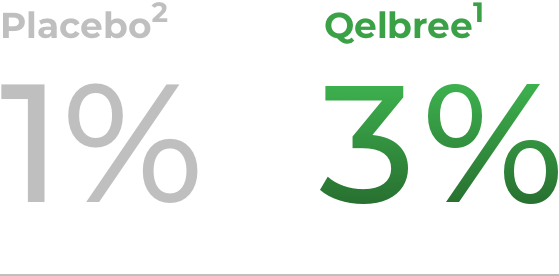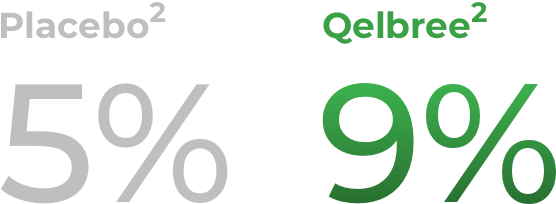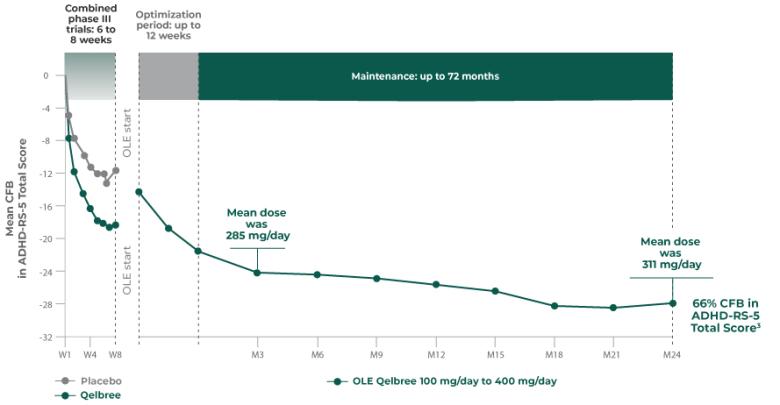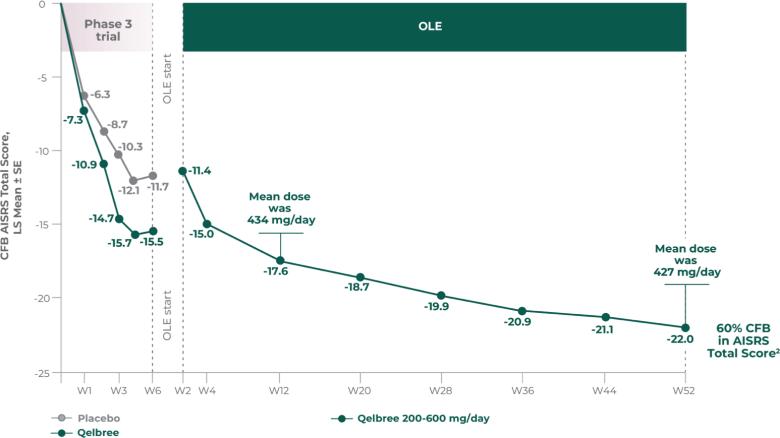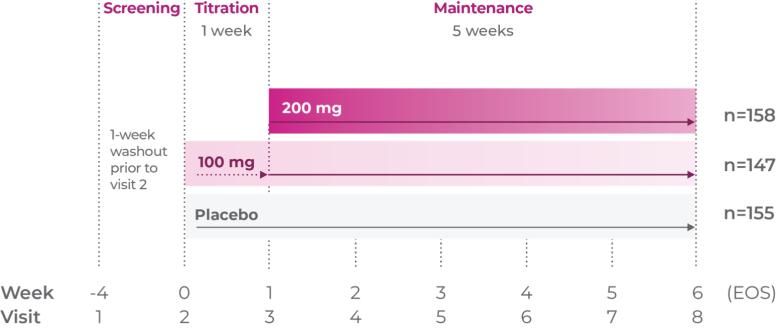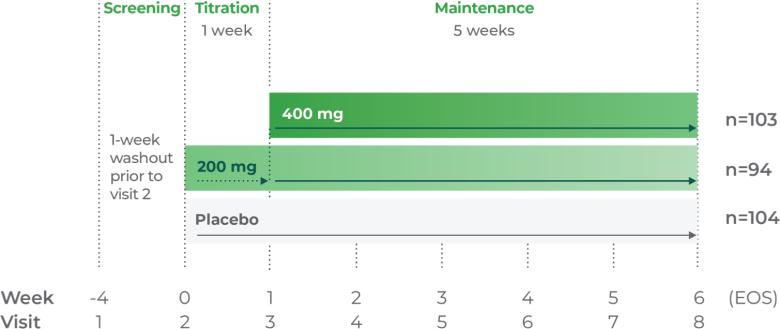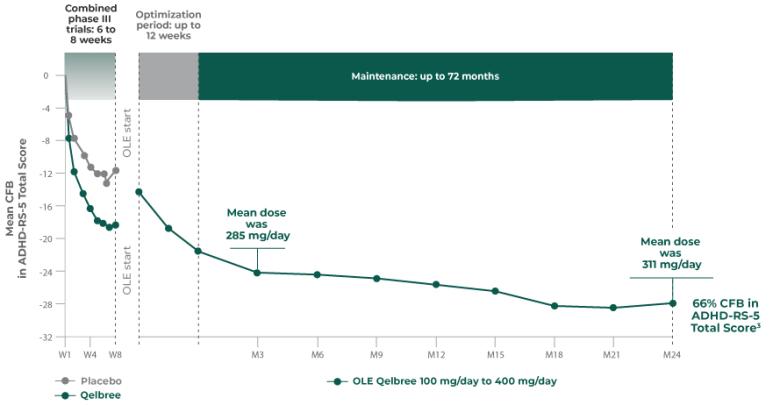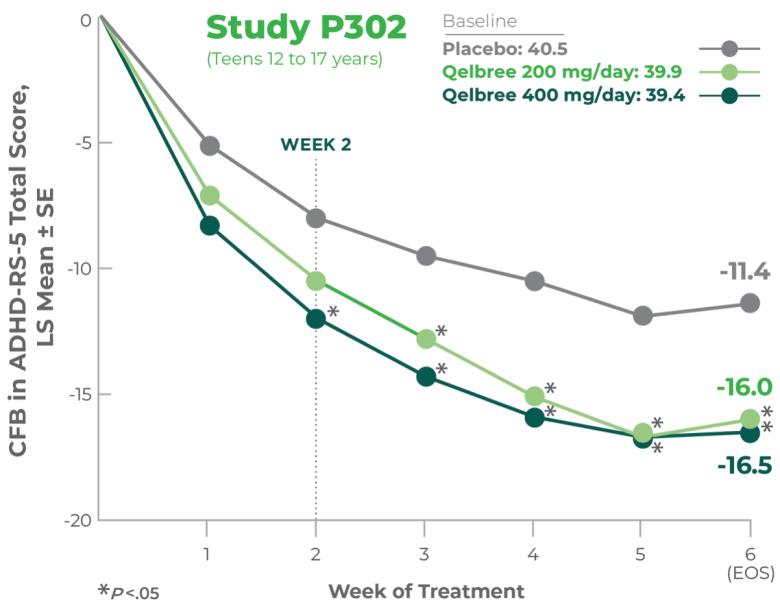
Proven safety and tolerability1
Safety was proven across multiple phase III clinical trials

Once-daily Qelbree shows no evidence of abuse potential in all pediatric and adult studies—minimizing risk of treatment abuse, misuse, or diversion1-3
Adverse reactions in clinical studies1
The most common AEs* (≥ 5% and twice the rate of placebo) reported by children and adolescents ages 6-17 (n=1289)1
Placebo
(n=463)
Qelbree
(n=826)
Somnolence†
4%
16%
Decreased appetite
0.4%
7%
Fatigue
2%
6%
*The most common adverse reactions (≥ 5% and at least twice the rate of placebo for any dose) were somnolence, decreased appetite, fatigue, nausea, vomiting, insomnia, and irritability.
The most common AEs (≥ 5% and twice the rate of placebo) reported by adults ages 18 to 60 (N=372)2
Placebo
(n=183)
Qelbree
(n=189)
Insomnia†
7%
23%
Headache†
7%
17%
Fatigue
3%
12%
Nausea
3%
12%
Decreased appetite
3%
10%
Dry mouth
2%
10%
Somnolence†
2%
6%
Constipation
1%
6%
†The following items were combined:
- Insomnia: initial insomnia, insomnia, middle insomnia, poor quality sleep, sleep disorder, terminal insomnia.
- Headache: headache, migraine, migraine with aura, tension headache.
- Somnolence: somnolence, lethargy, sedation.
Abbreviations: AEs, adverse events; TEAEs, treatment-emergent adverse events.
Because clinical trials are conducted under widely varying conditions, AE rates observed in clinical trials of a drug cannot be directly compared to rates in the clinical trials of another drug and may not reflect the rates observed in clinical practice.
Qelbree discontinuation rates1
Children and adolescents ages 6 to 17
Adults ages 18 to 60
Qelbree Safety Profile
- Viloxazine is unlikely to have a DDI with amphetamine or methylphenidate1
- No clinically relevant liver enzyme elevation2
- Treatment with Qelbree did not appear to have any influence on ECG2
Abbreviations: DDI, Drug-Drug Interaction; ECG, Electrocardiogram.


